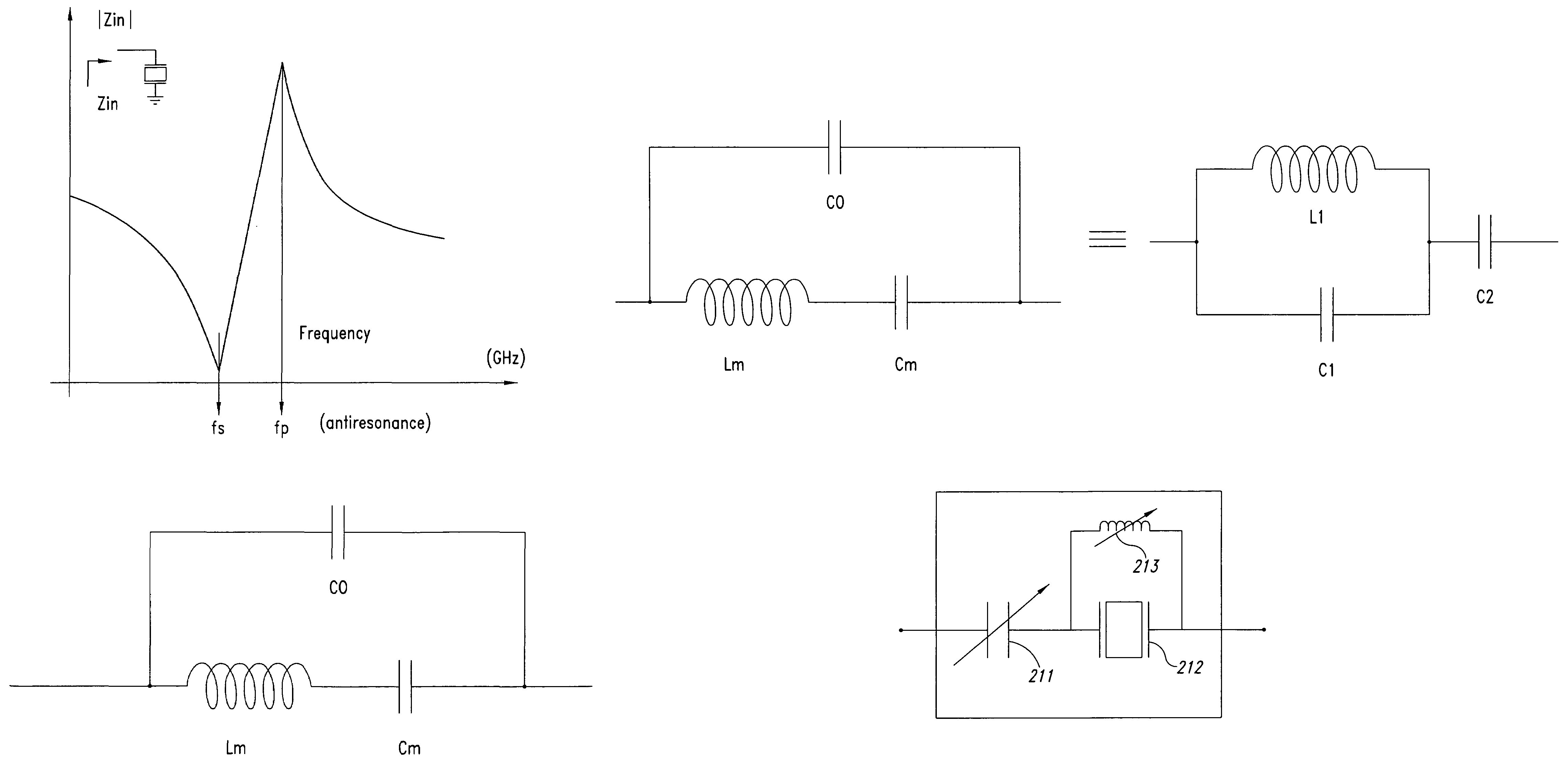Electronic circuit comprising a resonator to be integrated into a semiconductor product
a technology of acoustic resonators and electronic circuits, which is applied in the direction of impedence networks, electrical apparatus, network simulating reactances, etc., can solve the problems of inability to eliminate the dispersion of electric characteristics of resonators, the use of acoustic resonators, and the inability to integrate them into a semiconductor product, so as to achieve the effect of strengthening the parallel frequency tuning
- Summary
- Abstract
- Description
- Claims
- Application Information
AI Technical Summary
Benefits of technology
Problems solved by technology
Method used
Image
Examples
first embodiment
[0058]FIG. 2a illustrates a TRC in which the series resonance of a BAW resonator 212 is acted upon. To this end, an inductor 213 whose inductance is variable so that it can be adjusted in order to start resonating with the parallel capacity of the resonator (which is close to frequency fp) or in the vicinity of this frequency, is assembled in parallel connection with resonator 212.
[0059]It is then possible to really act on the series resonance and control the resonant frequency by means of a capacitive tuning element 211.
second embodiment
[0060]FIG. 2b corresponds to a TRC in which the parallel resonance of a BAW resonator 222 is now acted upon. To this end, this time an inductor 223 that is variable in order to be adjusted so that it starts resonating with the equivalent series capacity (C2) close to frequency fs of the resonator of the FIG. 1c, or in the vicinity of this frequency, is connected in series with resonator 222. Then, a capacitive tuning element (221) is connected in parallel with both series elements, to interact with the parallel resonance of resonator 222 and set it to frequency fp.
[0061]Thus, through the combined action of partner elements 221 and 223, it is possible to adjust the operational frequency—within a broad range—by means of tuning element 211 or 221 according to the case.
[0062]Thus, there is a true co-operation between tuning element 211 (or 221) and inductor 213 (resp. 223) that, by its action in the vicinity of both resonant and antiresonant frequencies of the acoustic resonator, reinfo...
PUM
 Login to View More
Login to View More Abstract
Description
Claims
Application Information
 Login to View More
Login to View More - R&D
- Intellectual Property
- Life Sciences
- Materials
- Tech Scout
- Unparalleled Data Quality
- Higher Quality Content
- 60% Fewer Hallucinations
Browse by: Latest US Patents, China's latest patents, Technical Efficacy Thesaurus, Application Domain, Technology Topic, Popular Technical Reports.
© 2025 PatSnap. All rights reserved.Legal|Privacy policy|Modern Slavery Act Transparency Statement|Sitemap|About US| Contact US: help@patsnap.com



